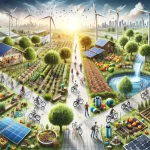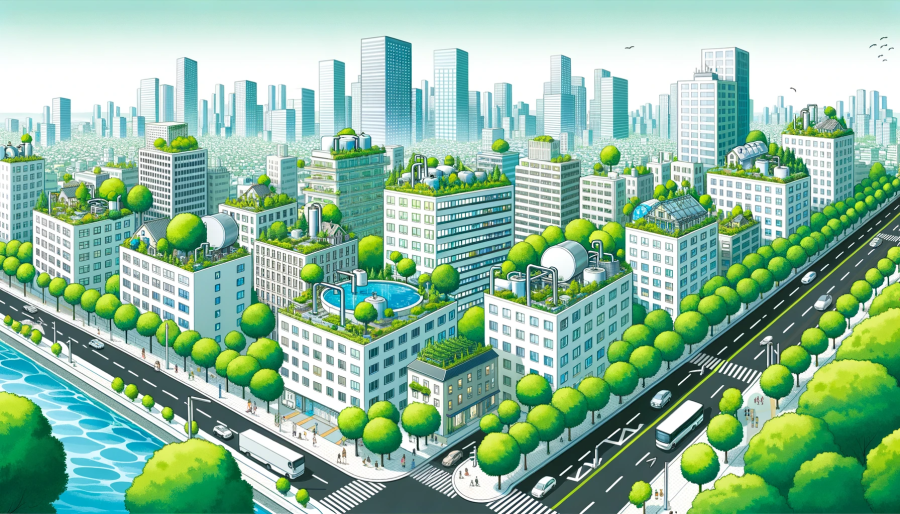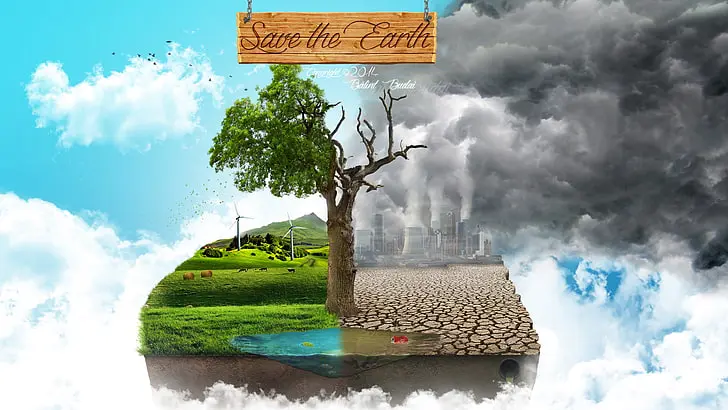 Dive into the rewarding journey of achieving environmental sustainability goals. Discover actionable strategies, and real-world examples, and ignite change today!
Dive into the rewarding journey of achieving environmental sustainability goals. Discover actionable strategies, and real-world examples, and ignite change today!
Sustainability Goals Key Takeaways:
- Environmental sustainability goals are set objectives aimed at conserving natural resources, reducing pollution, and promoting sustainable practices.
- They guide individuals and organizations in making eco-friendly decisions, contributing to a healthier planet and a more sustainable future.
Achieving Environmental Sustainability Goals

Achieving environmental sustainability goals is like embarking on a thrilling quest for a greener planet.
It’s about forming a pact with Mother Earth, honoring our resources, and taking strides toward a future where every day is Earth Day.
As we unfold the map to sustainability, each goal marked is a treasure, leading us closer to the heart of environmental harmony.
Join us as we explore this exciting path and uncover the essence of living sustainably.
In recent times, the drive towards achieving environmental sustainability goals has shifted from being a mere buzzword to a pressing necessity.
As the adverse effects of environmental degradation and global warming become more pronounced, a collective action plan is urgently required to mitigate the negative impact on human health and our planet.
The importance of environmental sustainability has gained significant attention worldwide.
As global awareness of climate change and resource depletion grows, nations, organizations, and individuals are increasingly realizing the urgent need to set and achieve sustainability goals.
This article explores the significance of environmental sustainability goals and discusses the key pathways towards creating a greener and more sustainable future.
The Importance of Environmental Sustainability Goals:
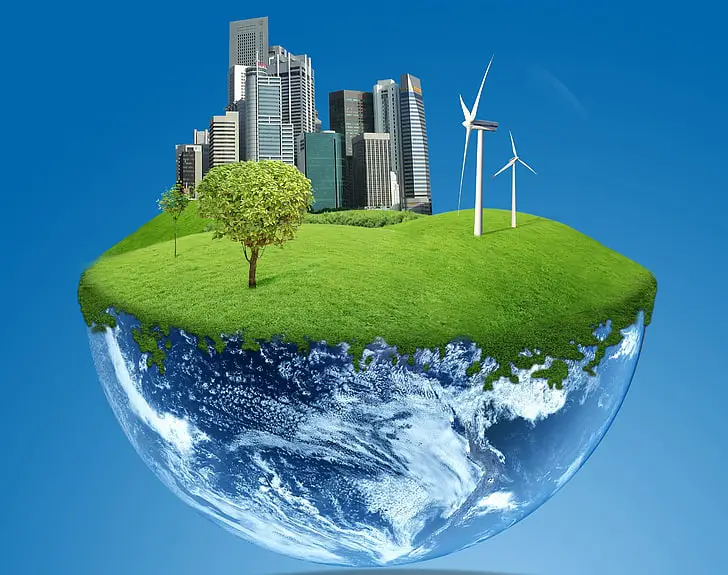
Environmental sustainability goals play an important role in addressing the pressing issues of environmental degradation and energy consumption.
They serve as a roadmap to a sustainable economy, promoting the reduction of GHG emissions, conservation of biodiversity, and the prudent use of our natural resources.
Environmental sustainability goals serve as guiding principles and targets that address critical ecological challenges.
These goals aim to preserve the delicate balance between human activities and the natural environment, ensuring the well-being of present and future generations.
They encompass various aspects such as reducing greenhouse gas emissions, conserving biodiversity, promoting renewable energy sources, improving waste management, and preserving natural resources.
Sustainable Environment Guiding Principles:
- Environmental sustainability goals serve as beacons, guiding nations and organizations towards eco-friendly practices to address ecological challenges.
Targets for a Healthy Planet:
- These goals set specific targets like reducing greenhouse gas emissions, promoting renewable energy, and conserving biodiversity to preserve our planet.
Ensuring Future Well-being:
- They embody a vision for a sustainable future, ensuring the well-being of present and future generations through balanced human-nature interactions.
Understanding the Current Environmental Landscape:
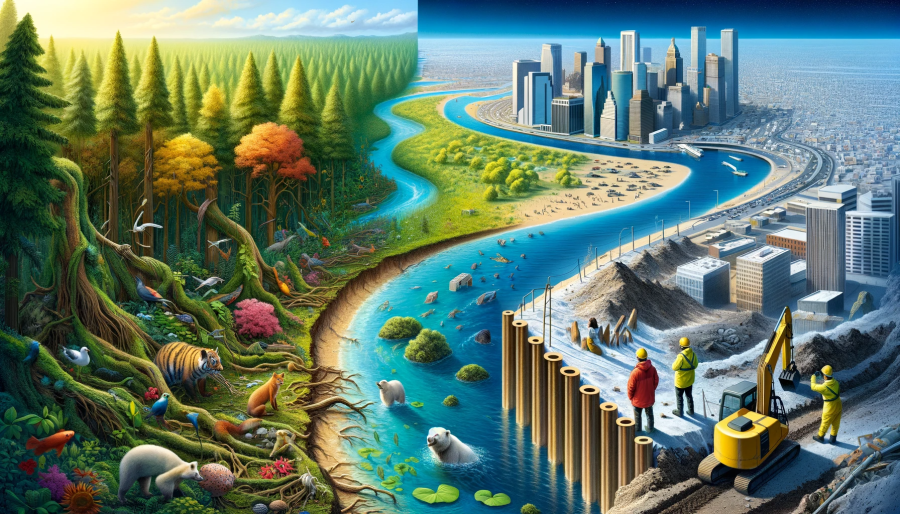
The world is witnessing unprecedented extreme weather events, from devastating wildfires to catastrophic hurricanes, underlining the environmental risks humanity faces.
These calamities bring to the forefront the urgent action needed to curb GHG (Greenhouse Gas) emissions and reduce our global environmental footprint.
The journey towards a greener future begins with a clear understanding of our current environmental landscape.
This encompasses recognizing the ecological footprint, the pressures on natural resources, and the challenges that stand in our way to achieving sustainability.
This section delves into the present scenario, setting the stage for exploring the pathways to environmental sustainability.
The Ecological Footprint:
- Human activities over the decades have significantly impacted Earth’s ecosystems. The ecological footprint encapsulates the pressure exerted on natural resources, painting a picture of our environmental impact.
Challenges Faced in Achieving Sustainability:
- Various challenges, like policy limitations, financial constraints, and resistance to change in traditional practices, hinder the path to sustainability. Tackling these challenges requires a holistic approach and collective effort.
Global Awareness Activities and Initiatives:
- The growing global awareness of climate change and resource depletion has spurred numerous initiatives aiming to address these challenges. International agreements and local policies are gradually aligning towards environmental sustainability goals.
The Ecological Footprint and Environmental Science

The ecological footprint provides a lens through which we can view our environmental impact.
By using environmental science and measuring the demands human activities place on nature, it underscores the urgency to adopt sustainable practices.
This section explores the concept of the ecological footprint, its implications, and how reducing it is instrumental for a greener future.
Our planet has been under severe pressure due to human activities. Over the last 50 years, the ecological footprint has exceeded what Earth can regenerate, creating a deficit that’s hard to fill.
Challenges Faced in Achieving Sustainability:
Embarking on the path of sustainability unveils a myriad of challenges that necessitate comprehensive strategies to overcome.
From policy limitations to technological barriers, these hurdles require concerted efforts at individual, community, and global levels to navigate.
This section delves into these challenges, shedding light on the roadblocks and potential solutions on the journey towards achieving environmental sustainability.
-
Policy Limitations:
- The lack of stringent policies or enforcement can hinder sustainability efforts. It’s essential to have robust policies that promote eco-friendly practices and hold individuals and organizations accountable.
-
Financial Constraints:
- Funding is a major hurdle in transitioning to sustainable practices. Financial support from governments and private sectors is crucial for sustainable finance for the research, development, and implementation of sustainable technologies.
-
Resistance to Change:
- Traditional practices are often hard to change due to resistance from communities or industries. Education and awareness campaigns can help overcome this resistance by highlighting the long-term benefits of sustainability.
-
Technological Barriers:
- The absence of advanced technologies can slow down the shift towards more sustainable practices. Investment in technological innovation is key to overcoming this challenge.
-
Lack of Public Awareness:
- Insufficient awareness about the importance of sustainability can result in slow progress. Increasing public awareness through education and campaigns is crucial for achieving environmental goals.
-
Global Cooperation:
- Achieving sustainability is a global effort. Lack of international cooperation can stall progress, emphasizing the need for unified global strategies and actions towards sustainability.
The United Nations Sustainable Development Goals (UN-SDGs):
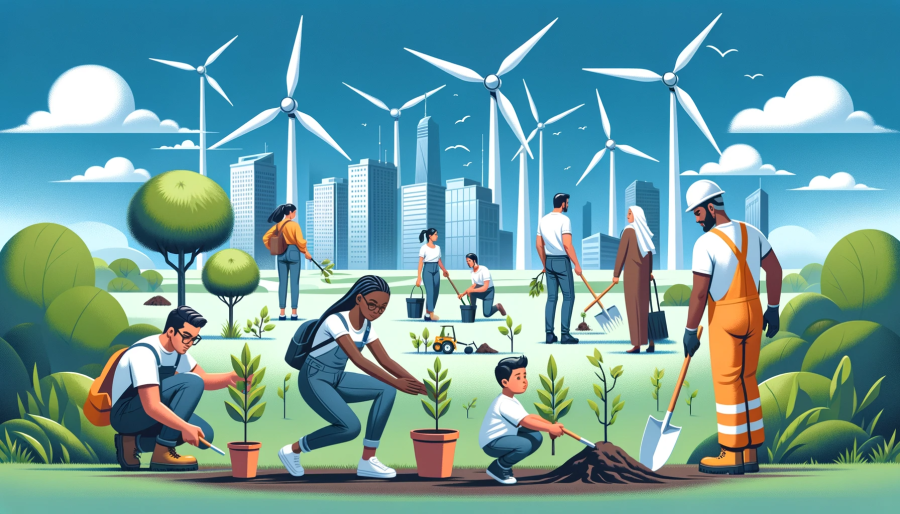
In September 2015, world leaders adopted the 2030 Agenda for Sustainable Development, introducing 17 goals cutting across various sectors, all designed to promote prosperity while protecting the planet.
The essence of these goals echoes the definition of sustainable development by the Brundtland Commission in 1983, emphasizing meeting present needs without compromising the future.
The UN-SDGs are a universal call to action, aimed at ending poverty, protecting the planet, and ensuring prosperity for all. These goals provide a shared blueprint for peace and prosperity, now and into the future.
The 2030 Agenda for Sustainable Development, adopted by all United Nations Member States in 2015, provides a shared blueprint for peace and prosperity for people and the planet, now and into the future. At its heart are the 17 Sustainable Development Goals (SDGs), which are an urgent call for action by all countries – developed and developing – in a global partnership. https://sdgs.un.org/goals

Here are the 17 sustainable development goals:
-
No Poverty:
- Alleviating Poverty: Exploring initiatives and strategies aimed at poverty reduction.
-
Zero Hunger:
- Food Security: Examining efforts to ensure access to nutritious and sufficient food.
-
Good Health and Well-being:
- Health Equity: Discussing programs aimed at reducing health disparities.
-
Quality Education:
- Education for Sustainable Development: Delving into the integration of sustainability principles in education.
-
Gender Equality:
- Women in Sustainability: Highlighting the role of women in driving sustainability initiatives.
-
Clean Water and Sanitation:
- Water Conservation Initiatives: Showcasing successful community and governmental water conservation projects.
-
Affordable and Clean Energy:
- Renewable Energy Transition: Exploring the shift towards renewable energy sources.
-
Decent Work and Economic Growth:
- Sustainable Economic Growth: Analyzing the balance between economic growth and sustainability.
-
Industry, Innovation, and Infrastructure:
- Sustainable Industrial Practices: Discussing the incorporation of sustainable practices in industries.
-
Reduced Inequalities:
- Equity in Sustainability Initiatives: Highlighting the importance of inclusivity in sustainability efforts.
-
Sustainable Cities and Communities:
- Community-Led Sustainability Initiatives: Showcasing successful community-driven sustainability projects.
-
Responsible Consumption and Production:
- Circular Economy: Exploring how a circular economy contributes to sustainable consumption and production.
-
Climate Action:
- Community-Led Climate Initiatives: Showcasing successful community-driven climate action projects.
-
Life Below Water:
- Marine Conservation Programs: Discussing initiatives aimed at preserving marine ecosystems.
-
Life on Land:
- Land Restoration Projects: Highlighting projects focused on restoring and preserving land ecosystems.
-
Peace, Justice, and Strong Institutions:
- Environmental Justice: Examining the intersection of social justice and environmental sustainability.
-
Partnerships for the Goals:
- Cross-Sectoral Partnerships: Highlighting collaborations between different sectors in achieving sustainability goals.
These sub-points delve into the essence of the UN-SDGs, shedding light on real-world applications and initiatives driving these goals.
Pathways to a Greener Future:
Embarking on the pathways to a greener future entails embracing sustainable practices across various sectors.
It’s about transitioning to renewable energy, practicing sustainable resource management, conserving biodiversity, and fostering education and awareness.
This section explores these pathways, illuminating how they intertwine to guide us toward a more sustainable, eco-friendly future.
Transition to Renewable Energy:
Transitioning to renewable energy is a pivotal step in reducing energy consumption and achieving carbon neutrality.
The adoption of electric vehicles and sustainable energy sources like solar and wind energy can significantly reduce the environmental degradation caused by conventional energy sources.
Shifting from fossil fuels to renewable energy is crucial for mitigating climate change.
Investments in clean energy infrastructure and the promotion of energy efficiency and renewable electricity are essential steps towards sustainability.
Sustainable Resource Management:
Effective management of our supply chain and adopting practices like value chain analysis can lead to a more sustainable way of resource utilization.
It’s essential to understand the environmental impact of our consumption patterns and work towards minimizing waste and promoting a circular economy.
Implementing circular economy practices, minimizing waste, and conserving water resources are part of responsible consumption that paves the way to environmental sustainability.
Conservation and Biodiversity Protection:
Preserving ecosystems and protecting biodiversity are vital for a healthy planet. Conservation efforts like reducing deforestation and supporting reforestation are crucial to achieving sustainability goals.
Climate Action and Adaptation:
The Paris Agreement is a testament to the global goals set by nations to combat global warming.
Adopting a robust action plan to face extreme weather events and working towards climate solutions are crucial steps in achieving our environmental sustainability goals.
Ambitious action to combat climate change, supporting green policies, and enhancing resilience to climate-related risks is imperative for a greener future.
Education and Awareness:
Promoting education and creating awareness about the pillars of sustainability, the importance of biodiversity, and the need for water conservation especially in water-stressed areas is essential.
It empowers civil society to make informed decisions that contribute to a better future for human society and the health of the environment.
Promoting environmental education and fostering a culture of environmental responsibility is crucial for making informed choices toward a greener future.
The Role of Cities in Achieving Sustainability:

Cities are the epicenters of development and major contributors to climate change.
Transforming the urban landscape, from efficient public transportation to green building designs, can significantly mitigate carbon emissions.
Embracing sustainable urbanization, promoting inclusive and sustainable transport systems, and reducing environmental impacts are crucial steps towards city-level sustainability.
Sustainable Urban Planning:
- Urban planning strategies that emphasize green spaces, efficient transportation, and energy-efficient buildings are crucial. They help in reducing urban emissions and enhancing the quality of life for city dwellers.
Green Building Initiatives:
- Green building designs are pivotal in mitigating the urban carbon footprint. They incorporate energy-efficient systems and environmentally friendly materials, promoting sustainability at the grassroots construction level.
Waste Management Systems:
- Efficient waste management systems are essential for reducing pollution action in cities. They promote recycling and composting, leading to a significant reduction in waste sent to landfills.
Community Engagement and Education:
- Community engagement and environmental education foster a culture of sustainability. They empower urban dwellers to adopt eco-friendly practices, contributing to the overall sustainability of cities.
Policy Implementation and Enforcement:
- Effective policy implementation and enforcement in urban areas support sustainability goals. Policies that focus on reducing emissions, conserving water, and promoting green spaces are instrumental in driving sustainable urban living.
Holistic Approaches Towards Environmental Sustainability:

Balancing economic, social, and environmental factors is at the heart of sustainability.
This holistic approach ensures that economic growth goes hand in hand with ecological responsibility.
By integrating sustainable practices across various sectors and fostering global collaborations, a more sustainable path forward is envisioned.
This synergy between environmental development and sustainability nurtures a long-term vision for a greener future.
Balanced Growth:
- Achieving a balance among economic, social, and environmental factors ensures sustainable growth. This triad forms the core of holistic sustainability, promoting harmonious development.
Global Collaboration:
- Cross-border collaborations enhance the sharing of sustainable practices and technologies. Global partnerships foster a unified approach to tackling environmental challenges.
Integrated Sectoral Approaches:
- Integrating sustainability across various sectors like agriculture, industry, and urban development promotes a comprehensive approach to environmental sustainability.
Long-Term Vision:
- Adopting a long-term vision ensures that the actions taken today contribute positively to the environment and society in the future, ensuring a sustainable legacy.
Education and Awareness:
- Fostering education and awareness about sustainability encourages informed choices and cultivates a culture of responsibility towards the environment.
Sustainable Technologies:
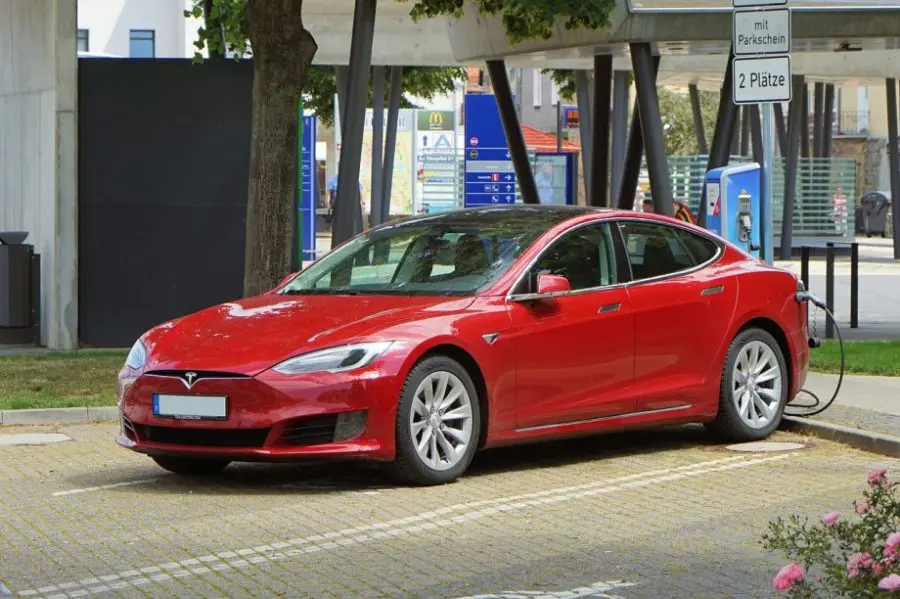
Sustainable technologies are pivotal in addressing environmental challenges, enabling a shift towards greener practices.
They offer innovative solutions to energy, waste, and water management problems, playing a crucial role in reducing ecological footprints and promoting a sustainable future.
-
Solar and Wind Energy Technologies:
- Transitioning to solar and wind energy reduces greenhouse gas emissions, lowers energy costs, and fosters energy independence.
-
Waste-to-Energy Conversion:
- By converting waste into energy, communities can reduce landfill usage, generate clean power, and manage waste sustainably.
-
Water Purification Technologies:
- Innovations in water purification are providing clean water in underserved areas, promoting health, and reducing waterborne diseases.
Each of these technologies is a stride towards a sustainable future, addressing the core environmental challenges
Community Stories:
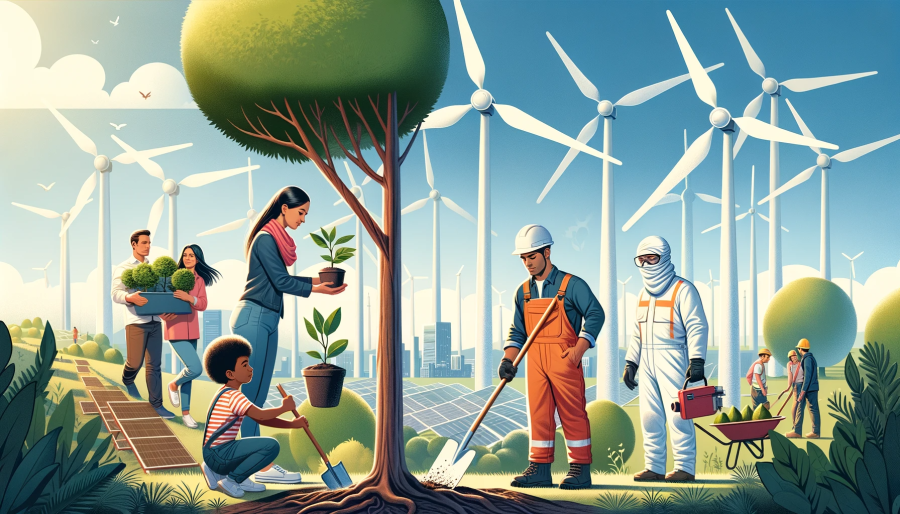
Communities worldwide are taking the initiative to end poverty, ensure healthy lives, and create a sustainable society.
From local food supply initiatives to community-driven environmental protection projects, these stories reflect the essence of a common goal of achieving environmental sustainability.
Communities globally are engaging in innovative sustainability practices, showcasing the power of collective action.
These communal initiatives are not only addressing local environmental challenges but also setting exemplary precedents for larger societal shifts toward sustainability.
From small towns to bustling cities, community-driven actions are forming the backbone of the global sustainable movement towards a more sustainable and resilient future.
By harnessing local knowledge, resources, and collective will, communities are demonstrating that meaningful change is achievable.
Through various practices like promoting local food production, managing waste effectively, and fostering energy independence, these community stories serve as a beacon of hope and a source of inspiration for others to take action.
Transition Towns in the UK:
Totnes and Lewes are examples of Transition Towns in the UK, where local communities are coming together to create resilience against economic and environmental challenges.
Transition Town Lewes works towards transforming the town into a community that’s less reliant on fossil fuels and more harmonized with the natural world1.
Similarly, Transition Town Totnes has initiatives like the Energy Wise Show to reduce energy use and promote community engagement through various events2.
The Transition Network, which began in Totnes, aims at responding to climate change and peak oil issues, growing rapidly to become a global movement3.
Totnes, being the flagship Transition town, boasts 5,000 supporters and has garnered significant support from local authorities like the Lewes District Council4.
Urban Community Gardens:
Urban community gardens like Gotham Greens in New York & Chicago, Art in the Garden in Pittsburgh, La Finca del Sur in South Bronx, New York, and the Sustainable Flatbush Healing Herb Garden are exemplars of how communities are fostering local food production, education, and social engagement.
Gotham Greens, for instance, produces over 100,000 pounds of greens per year in Brooklyn, promoting local food production5.
Art in the Garden merges social justice education with gardening, creating a rich outdoor learning environment6.
La Finca del Sur serves as a communal gardening space in an urban setting7, while the Sustainable Flatbush Healing Herb Garden offers hands-on agricultural demonstrations and workshops on using herbs in culinary practices and as medicine8.
Local Waste Recycling Initiatives:
Several local initiatives worldwide are making strides in waste recycling.
For instance, Los Angeles’ Zero Waste Plan aims for a 90% waste diversion rate by 2025, emphasizing both manufacturer and consumer responsibilities in achieving this goal9.
Tompkins County, NY, initiated a residential food waste prevention program, supported by a state grant, which included community educational events and social media campaigns10.
California set a goal of “75 percent recycling, composting or source reduction of solid waste by 2020” through its 75 Percent Initiative11.
Community recycling programs, like curbside collection, encourage residents to recycle by providing additional recycling bins and regular waste collection, ensuring that recycling becomes a part of daily community life12.
These stories underline the power of community-led actions and the innovative ways in which communities are working towards environmental sustainability.
Case Studies:

Real-world case studies provide a glimpse into sustainability in action, offering practical insights and inspiration.
By examining how different cities, corporations, and communities approach sustainability, we can learn valuable lessons and gain motivation to adopt similar practices in our own contexts.
These case studies showcase the transition to renewable energy, the adoption of circular economy principles, and community-led conservation initiatives, which are central to achieving environmental sustainability goals.
1. Cities Transitioning to Renewable Energy:
- Austin, Texas: The City of Austin has a strong policy focus on a clean energy transition, setting a pace for other cities to follow1.
- Philadelphia: In 2017, Philadelphia released a municipal energy master plan to reduce carbon emissions and transition municipal energy use to renewable sources2.
- Copenhagen and Aspen: These cities have made a commitment to become carbon-neutral by 2025 and to use 100% renewable energies, respectively3.
2. Corporations Adopting Circular Economy Principles:
- Resource Optimization: Corporations are minimizing waste and maximizing resource efficiency by adopting circular economy principles.
- This involves redesigning products and processes and waste reduction, reusing materials, and recycling.
- This helps improve corporate sustainability too.
3. Community-led Conservation Initiatives:
- Biodiversity Protection: Communities are engaging in conservation initiatives to preserve local biodiversity and natural resources.
- This often involves setting up protected areas, promoting sustainable land use, and educating the public about the importance of biodiversity.
FAQs on Environmental Sustainability:

Environmental sustainability is a vast topic with numerous facets. It’s natural to have questions as we navigate through the pathways to a more sustainable future.
In this section, we address some frequently asked questions to provide a clearer understanding of environmental sustainability and how we can work towards achieving these crucial goals.
Q: What are the main goals of the United Nations Sustainable Development Goals (UN-SDGs) concerning environmental sustainability?
A: The UN-SDGs are designed to address various environmental issues.
They aim to combat climate change, conserve biodiversity, ensure sustainable resource management, and provide access to clean water and sanitation.
These goals promote a harmonious relationship between humanity and nature, emphasizing the necessity of preserving the environment for future generations.
Q: How can cities contribute to achieving environmental sustainability?
A: Cities play a pivotal role in environmental sustainability by adopting sustainable urban planning, promoting green building designs, and implementing efficient waste management systems.
Through these practices, cities can significantly reduce their carbon emissions, manage resources efficiently, and foster a culture of sustainability among their residents.
Q: What are some green industrial practices that can be adopted for a greener future?
A: Green industrial practices include adopting operations that are cleaner and production methods that optimize resource use, and transitioning to renewable energy sources.
These practices not only minimize environmental impact but also contribute to economic efficiency and social equity, forming the pillars of industrial sustainability.
Q: How does biodiversity conservation contribute to environmental sustainability?
A: Biodiversity conservation is crucial for maintaining ecological balance, ensuring the survival of various species, and preserving natural habitats.
It contributes to environmental sustainability by enhancing ecosystem resilience, supporting pollination and soil fertility, and providing a buffer against natural disasters.
This FAQ section seeks to simplify the multifaceted discourse around environmental sustainability, providing a clearer understanding of this essential topic.
Environment Strategy Goals Conclusion:

Achieving environmental sustainability goals is not just an important goal but a necessity in the face of the challenges the global population is encountering.
By taking concerted actions at an individual, organizational, and global level, we inch closer to fostering a sustainable environment that guarantees human well-being and a prosperous future for all.
Environmental sustainability goals serve as a beacon, illuminating the path toward a greener, healthier, and more sustainable future.
These goals encapsulate the essence of sustainable living, providing a framework for individuals, organizations, and governments to align their actions with eco-friendly practices.
The journey towards sustainability necessitates a collective effort, embracing the transition to renewable energy, fostering sustainable resource management, and promoting education and awareness on environmental matters.
Through these proactive steps, we not only inch closer to meeting the sustainability goals but also create a conducive environment where both people and nature can thrive in harmony.
The ripple effect of these efforts extends beyond immediate surroundings, contributing to global sustainability initiatives.
As we forge ahead, the lessons learned, the policies enacted, and the community engagements fostered will serve as stepping stones towards achieving a sustainable equilibrium, ensuring a vibrant and thriving ecosystem for generations to come.
Roadmap to a Sustainable World:
Environmental sustainability goals chart a course toward a resilient, flourishing planet.
They encapsulate the essence of a sustainable living ethos, directing collective endeavors towards eco-centric practices.
By adhering to these goals, society nurtures a harmonious co-existence with nature, fostering a culture that reveres and protects the natural world, ensuring its vibrancy for future generations.
Collective Action:
The essence of sustainability lies in collective action. It beckons individuals, organizations, and governments to converge their efforts towards eco-friendly practices.
Through informed choices, policy enactments, and collaborative initiatives, a tapestry of concerted actions emerges, propelling society toward a greener, healthier future.
Each step taken, no matter how small, is a stride towards etching a sustainable narrative, creating a legacy of environmental stewardship for ensuing generations.



